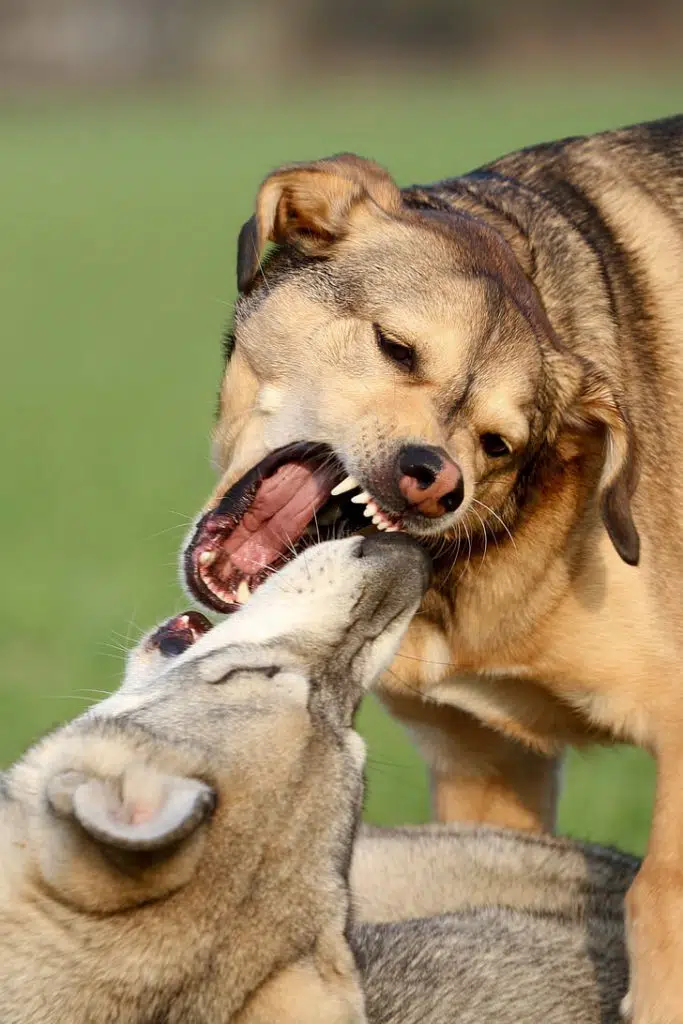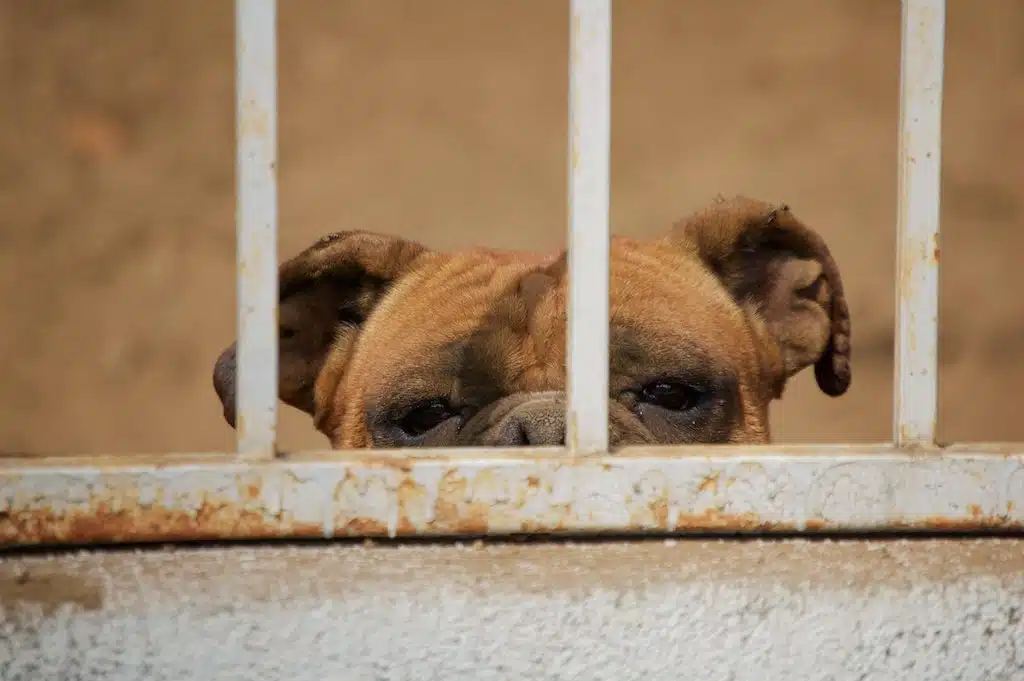Home » Blog » Pet » Pet Health & Safety » 12 Signs of Animal Abuse
Categories
Tags
animal welfare
breed profile
buying a car
buying a pet
Car
car accessories
car care
car features
car insurance
Car safety
car sales
car service
cat
cat behaviour
cat body language
Cat Breeds
cat food
cat insurance
comprehensive car insurance
Dog
Dog Behaviour
dog body language
Dog Breeds
dog food
Dog Insurance
dog training
eco friendly cars
Kitten
New Car
pet accessories
pet activities
Pet Adoption
pet breeders
pet days of the year
pet fun stuff
Pet Health
pet insurance
pet parenting
Pet Safety
pet services
Puppy
rescue pets
road safety
road trip
safe driving
Recent Blog:
Facebook Posts
1 day ago
Growing old sometimes means we can’t take care of pets anymore. Find out some advice on what to do when this happens:![]()
![]() Senior Pet Parents – Contingency Plans for Your Pet – bit.ly/44bzwkS
... See MoreSee Less
Senior Pet Parents – Contingency Plans for Your Pet – bit.ly/44bzwkS
... See MoreSee Less
Senior Pet Parents' Contingency Plans for Pets
www.pd.com.au
Sometimes senior pet parents need more downtime. For older pet owners, this can be tricky to navigate if their dog or cat is full of beans and wants to3 days ago
Before you rev up the engine, let’s run through a checklist of things to do before starting your car. Not only do these steps ensure your safety (and that of others around you), but they also help in maintaining your vehicle's longevity.![]()
![]() Driving Tips: Your Checklist Before Starting Your Car -
... See MoreSee Less
Driving Tips: Your Checklist Before Starting Your Car -
... See MoreSee Less
Driving Tips: Your Checklist Before Starting Your Car
www.pd.com.au
Heading out for a drive? Hold up a second! Whether you're dashing off to work, running errands, or embarking on a road trip adventure, there are a few1 week ago
Are intestinal worms setting up camp in your dog’s gut without paying rent? Here’s how to spot the main culprits and get rid of them too:![]()
![]() Preventing, Identifying and Treating Intestinal Worms in Dogs - bit.ly/43YjCKu
... See MoreSee Less
Preventing, Identifying and Treating Intestinal Worms in Dogs - bit.ly/43YjCKu
... See MoreSee Less
Preventing, Identifying and Treating Intestinal Worms in Dogs
www.pd.com.au
Intestinal worms, such as roundworms in dogs are one of the least glamorous topics on the planet. These intestinal parasites that basically use our dogsThousands of instances of animal abuse and neglect are reported across Australia every single year. Sad but true. Want to do your bit to help out? Read up on how to report animal abuse appropriately.
It can be difficult for us pet lovers to understand, but sadly many people abuse or neglect their animals. The RSPCA alone responds to more than 58 000 reports of animal abuse, neglect and abandonment each year.
If you’re anything like us, you’ll find that number sickening. Animals have the right to a peaceful existence with access to food, water, shelter and proper care. At PD Insurance, we think being a fantastic pet owner is a joy, not a chore.
But loving animals doesn’t only extend to your own pets. Another way you can love animals is the educate yourself on the signs of animal abuse. Because the reality is, most neglected or abused animals rely on the eyes and ears of the public for their protection.
It could be said that anyone who witnesses the mistreatment of an animal has a moral obligation to intervene.
But it can be hard to know for sure if an animal is being abused. It can be even harder still to know how to help without risking your own safety.
Signs of Animal Abuse
Animal abuse comes in many forms, from neglectful living conditions to deliberate physical harm and abandonment.
This article covers the top signs than an animal is being abused. If you observe any of these signs individually or in combination, you should report the case to the RSPCA.
Lack of food or water
Pets should have 24/7 access to clean water and be fed nutritious food daily. If you have observed that an animal is not having these very basic needs met, they’re likely being neglected.
Poor skin and coat condition
The physical condition of a dog or cat can give good clues as to whether they’re being mistreated or neglected. Animals with excessive fleas, open wounds, or mange – with patches of fur missing – require medical attention. If their owner isn’t getting them that care then they’re abusing their pet.
Of course, some cat and dog skin conditions persist despite the owner working hard to remedy them.
Evidence of bodily trauma
Animals that have missing or damaged body parts that remain untreated are suffering neglect or abuse. Limping could also be a sign that something untoward is happening.
They could even be the victim of illegal dog fighting, particularly in breeds like staffies, pit bulls and other ‘dangerous dog‘ type breeds. Read more about illegal dog fighting in Australia here.

Lack of shelter
Animals that are subjected to the elements without relief are neglected animals. Pets should have somewhere to retreat from sun, rain and wind. Ideally, they should be kept inside at night or taken to a cool area during the heat of the day in Australia.
If they don’t have access to an undercover area, then at least a kennel or lean-to type shelter.
Tethered or caged
If the animal is tied up all the time or caged regularly in cramped conditions, this is a sign of abuse. While some people need to tether or chain their dogs for short periods, it should always be a temporary solution. If a dog has a chain, collar, or rope around it’s neck which is digging in is rubbing, that’s a bad sign too.
Animals should be able to move freely; if not in a backyard then in a good-sized area that provides shelter and enrichment. Remember that a crate isn’t always a sign of animal abuse though. Crate training isn’t the same as caging. The crate is never used as a tool for punishment, for a start. Plus, playtime for dogs and cats is crucial to their development – just like it is for kids.
Lack of sanitisation
If the animal is living atop its own urine and faeces and this isn’t cleaned away regularly, that’s a sign of neglect.
Abandonment
Animals who appear to be left in homes, yards, bushland or public areas without people to take care of them are classified as abandoned. Abandonment is illegal and is a form of animal abuse.
Of course, if you see an animal completely alone and scared, it isn’t always abandoned. It’s possible that you’ve just found a lost pet – so it’s best to try and get them checked for a microchip if possible. Even the best owners and most well-behaved pets sometimes have mishaps.
Either way, a lost or abandoned animal should be reported.
Too many animals in one place
Animal hoarding is a thing, and it can be a major cause of neglect. People with too many animals are usually unable to provide adequate food, water, shelter and care for all of them. Even if you love them to bits, not being able to meet your animals’ basic needs is animal abuse.
If there are a lot of puppies around, you could even have uncovered an unethical puppy mill. Sadly, animal hoarders are often severely misguided animal lovers. But all the same, these cases must be reported.
Fear or aggression in the animal
Animals who are abused often learn to be fearful of people – especially of their abuser. Fear usually leads to aggression. A dog that is clearly fearful of or aggressive towards its owner and/or others is cause for alarm. Sometimes they can even be aggressive to other dogs, especially if they’ve learned to protect valuable resources like good.
Fearing for your safety? Or perhaps your own dog has aggression issues? Read our ‘Dog Attacks: How to Help Prevent Them‘ article. Also read Why You Should Ask Before Petting Someone’s Dog.

Overly submissive animals
If a dog appears overly submissive to its owner, that can also be a sign something isn’t right. Submissive behaviour in a dog includes cowering on the ground, rolling over onto its back and out of control urination. Of course, lots of dogs will roll over for strokes or might be very placid.
But a dog who looks like they’re walking on eggshells around their owner or other people has often endured some type of animal abuse and is fearful as a result.
Acts of physical violence
If you witness someone hitting, kicking, squeezing, throwing or otherwise harming their pet, that’s a great reason to report them for animal abuse. This behaviour is never justified. Its not a legitimate ‘training’ technique. Positive reinforcement dog training is the way to go for dog owners.
As for cats? We’re not sure they’re exactly the most trainable pets, but there’s certainly no expert who would advise hitting, kicking, or hurting them as a means of getting their message across.
How can you stop animal abuse?
So now you know how to identify animal abuse, the question is: what can you do to help? In Australia you contact the Department of Agriculture, Water, and the Environment. State and territory governments have primary responsibility for animal welfare and laws to prevent cruelty. You can find individual contact details depending on the Australian state or territory that you live in here.
Another way you can help is to volunteer with, or donate to, animal shelters. Every bit of assistance helps!

Read more:
- Domestic Violence and Pets: Safety Planning for You and Them
- What is the Yulin Dog Meat Festival and Should It Be Banned?
- Exposed: Tail Docking and Ear Cropping of Dogs in Australia
Caring for your own fur babies
We’re assuming that, because you’re here reading our blog, you’re already a wonderful pet parent. But accidents and illness can happen, and when they do, it’s good to know your fur baby is covered for prompt medical treatment.
To find an affordable pet cover plan to safeguard your four-legged mate, visit our pet insurance page.
Share On:




